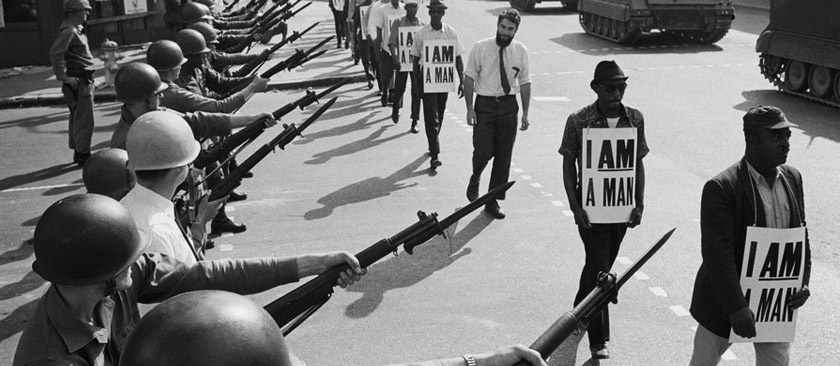Since the 1980s, the enemy of equal employment opportunity through upward socioeconomic mobility has been the pervasive and entrenched corporate-governance ideology and practice of maximizing shareholder value.
The Covid-19 pandemic has laid bare the deep-rooted racial divide that infects American society. According to APM Research Lab, the Covid-19 mortality rate for blacks has been 61.6 per 100,000 compared with 28.2 per 100,000 for Latinos, and 26.2 per 100,000 for whites. It’s another abhorrent statistic to add to the highly disproportionate number of African Americans who are poor, unemployed, and incarcerated.
The longer life-expectancy of white men compared with black men in the United States has narrowed in recent years, but that is because of a significant drop in longevity of white working-class males, who, even before the pandemic, were succumbing to “deaths of despair.” The fact is that blacks are doing terribly in a nation wracked by extreme economic inequality, which is dragging down the whole working class, irrespective of race or ethnicity. In a nation that once advertised itself as the land of upward socioeconomic mobility through equal employment opportunity, intergenerational downward mobility has become the norm.
As a new generation has taken to the streets with demands for social transformation, we need to look back a half century to a time when the quest for equal employment opportunity gave rise to an African American blue-collar middle class. During the 1960s and 1970s, blacks with no more than high-school educations gained significant access to well-paid unionized employment opportunities, epitomized by semi-skilled operative jobs in the automobile industry, to which they previously had limited access. Anti-discrimination laws under Title VII of the 1964 Civil Rights Act with oversight by the Equal Employment Opportunity Commission (EEOC) supported this upward mobility for blacks in the context of a growing demand for blue-collar labor in the United States.
From the late 1970s, however, the impact of global competition and the offshoring of manufacturing combined with the financialization of the corporation to decimate these stable and well-paid blue-collar jobs. Under the seniority provisions of the increasingly beleaguered industrial unions, blacks tended to be last hired and first fired. As U.S.-based blue-collar jobs were permanently lost, U.S. business corporations and government agencies failed to make sufficient investments in the education and skills of the U.S. labor force to usher in a new era of upward socioeconomic mobility. This organizational failure left blacks most vulnerable to downward mobility.
Central to this corporate failure was a transformation of corporate resource allocation from “retain-and-reinvest” to “downsize-and-distribute.” Instead of retaining corporate profits and reinvesting in the productive capabilities of employees, major business corporations became increasingly focused on downsizing their labor forces and distributing profits to shareholders in the form of cash dividends and stock buybacks. Legitimizing massive distributions to shareholders was the flawed and pernicious ideology that a company should be run to “maximize shareholder value.” Eventually, the downward socioeconomic mobility experienced by blacks would also extend to devastating loss of well-paid and stable employment for whites who lacked the higher education now needed to enter the American middle class. By the twenty-first century, general downward mobility had become a defining characteristic of American society, irrespective of race, ethnicity, or gender.
In our project, “Fifty Years After: Black Employment in the United States Under the Equal Employment Opportunity Commission,” supported by the Institute for New Economic Thinking, we analyze the socioeconomic forces behind the promising rise in the 1960s and 1970s but, subsequently, the disastrous fall of the black blue-collar middle class. We do so by taking a deep dive into little appreciated but publicly available employment data collected for more than fifty years by the EEOC, notwithstanding the fact that a treasure trove of company-level “EEO-1” submissions remains hidden from public view. Our new working paper begins the analysis.
We show that the institutional foundation for upward socioeconomic mobility was the employment norm of a career with one company (CWOC) that prevailed at major U.S. business corporations in the decades after World War II. For both blue-collar and white-collar employees, CWOC meant stable employment, rising real wages or salaries, healthcare coverage, and company-funded defined-benefit pensions in retirement. But CWOC was a white man’s world, to which minorities as well as women were given unprecedented access from the last half of the 1960s by virtue of the Civil Rights Act of 1964. Government employment at local, state, and federal levels helped blacks gain access to the employment stability and rising pay that, along with health and retirement benefits, are foundational to the status of middle class. Blacks made their greatest progress, however, by entering unionized semi-skilled and skilled occupations in mass-production industries, most of which were dominated by a relatively small number of very large companies.
From the late 1970s, challenges from more productive foreign companies, particularly the Japanese, led to widespread plant closings and permanent layoffs in these industries, with a disproportionately adverse impact on black employment. Increasingly, automation and globalization also undermined stable and well-paid blue-collar employment in the United States. Automation and globalization, however, generated large profits for U.S. corporations that could have been reinvested in employees and new competitive products.
The more fundamental cause of the fall of the black, and eventually white, blue-collar middle class was the demise of the CWOC norm that had defined the “Old Economy business model.” A concomitant of this dramatic change in corporate employment relations was the failure of federal and state governments to invest in the education of the American working class, whites as well as blacks, so that, intergenerationally, they could transition from high-school-educated blue-collar employment to college-educated white-collar employment.
As the U.S. industrial economy transitioned from an “Old Economy business model,” characterized by a career with one company, to a “New Economy business model,” characterized by interfirm labor mobility, advanced education and social networks became increasingly important for building careers in well-paid white-collar occupations. In our Fifty Years After project, we analyze how, along with non-white Hispanics, blacks found themselves at a distinct disadvantage relative to whites and Asians in accessing these New Economy middle-class employment opportunities.
The fundamental explanation for these changes in socioeconomic mobility, however, is found, not in employment relations per se, but rather in a profound transformation of corporate governance. Since the 1980s, the enemy of equal employment opportunity through upward socioeconomic mobility has been the pervasive and entrenched corporate-governance ideology and practice of maximizing shareholder value. Our Fifty Years After study—which will be available in a series of INET working papers over the next two months—shows that for most Americans, of whatever race, ethnicity, and gender, maximizing shareholder value is the not-so-invisible hand that has a chokehold on the emergence of the stable and well-paid employment opportunities that are essential for sustainable prosperity.








